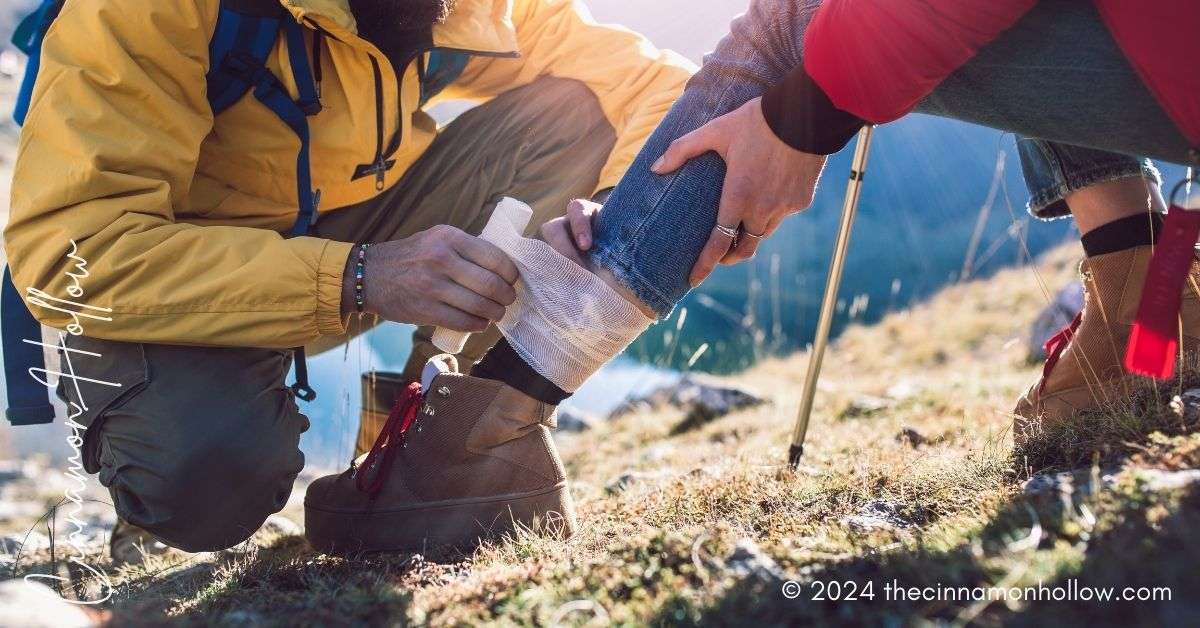Exploring the great outdoors can be an exhilarating experience, offering adventure and a chance to connect with nature. However, along with the beauty and excitement of wilderness exploration come inherent risks. Understanding the potential dangers and knowing how to mitigate them is essential for ensuring safety during outdoor activities. In this article, we’ll delve into some of the common catastrophic injuries that can occur in the wilderness, along with preventive measures and strategies for handling emergencies.
Traumatic Injuries
Falls:
Falls are one of the leading causes of injuries in outdoor settings. Whether hiking, climbing, or traversing rugged terrain, the risk of slipping or tripping is ever-present. Falls can result in fractures, sprains, head injuries, and other serious trauma. To minimize the risk of falls, it’s crucial to wear appropriate footwear, stay alert, and avoid taking unnecessary risks, especially in precarious or unfamiliar terrain.
When exploring wilderness areas, particularly in mountainous regions or along steep trails, it’s essential to maintain situational awareness and watch for potential hazards such as loose rocks, slippery surfaces, or unstable terrain. Using trekking poles or walking sticks can provide added stability and reduce the risk of losing balance. Additionally, staying on marked trails and following safety guidelines provided by park authorities can help mitigate the risk of falls and other accidents in the wilderness.
Animal Attacks:
Encounters with wildlife can turn dangerous if not approached with caution. While rare, animal attacks can lead to severe injuries, ranging from bites and scratches to more catastrophic outcomes. Understanding the behavior of local wildlife, avoiding areas known to be frequented by dangerous animals, and carrying bear spray or other deterrents can help prevent animal encounters. In the event of an attack, remaining calm, backing away slowly, and following proper protocols for wildlife encounters can increase the chances of a safe outcome.
In areas where encounters with large predators such as bears, mountain lions, or wolves are possible, it’s important to take additional precautions to reduce the risk of confrontation. Avoiding areas where wildlife is known to feed or den, making noise to alert animals of your presence, and storing food and scented items securely can help prevent attracting wildlife to your campsite. Understanding the signs of animal behavior and knowing how to respond in the event of an encounter can help minimize the risk of injury in the wilderness.
Hypothermia:
Exposure to cold temperatures, wind, and moisture can lead to hypothermia, a potentially life-threatening condition characterized by a drop in body temperature. Symptoms may include shivering, confusion, and loss of coordination. To prevent hypothermia, dress in layers, stay dry, and seek shelter from the elements when necessary. If hypothermia occurs, it’s essential to rewarm the affected individual gradually and seek medical attention promptly.
When venturing into cold or snowy environments, it’s important to dress appropriately for the conditions and be prepared for sudden changes in weather. Wearing moisture-wicking base layers, insulating mid-layers, and waterproof outer layers can help regulate body temperature and protect against hypothermia. Carrying emergency shelter, such as a lightweight tent or emergency bivvy, and packing extra clothing and blankets can provide added protection in case of unexpected weather or prolonged exposure to cold temperatures. Additionally, knowing how to recognize the early signs of hypothermia and taking prompt action to address them can help prevent serious complications in the wilderness.
Environmental Hazards
Dehydration:
Dehydration is a common risk during outdoor activities, particularly in hot climates or at high altitudes. Inadequate fluid intake can lead to fatigue, dizziness, and heat-related illnesses. To prevent dehydration, drink plenty of water before, during, and after physical exertion, and be mindful of signs of dehydration such as dry mouth, dark urine, and headache.
When hiking or engaging in strenuous activities in warm or arid environments, it’s important to carry an adequate supply of water and drink regularly to stay hydrated. Pay attention to your body’s hydration needs and take breaks as needed to rest and rehydrate. In addition to water, consuming electrolyte-rich fluids such as sports drinks or coconut water can help replenish lost electrolytes and maintain hydration levels during prolonged exertion. Avoiding excessive caffeine and alcohol consumption, which can contribute to dehydration, and monitoring urine output and color can help ensure adequate hydration during outdoor activities.
Heatstroke:
Heatstroke occurs when the body’s temperature regulation mechanisms fail, leading to a dangerous rise in core body temperature. Symptoms include rapid pulse, confusion, and loss of consciousness. To avoid heatstroke, stay hydrated, seek shade during peak sun hours, and dress in lightweight, breathable clothing. If someone exhibits signs of heatstroke, move them to a cool place, remove excess clothing, and seek medical assistance immediately.
When participating in outdoor activities in hot or humid conditions, it’s important to take precautions to prevent heat-related illnesses such as heatstroke. Avoid strenuous activity during the hottest part of the day and take frequent breaks in shaded or cool areas to rest and cool down. Wearing light-colored, loose-fitting clothing and a wide-brimmed hat can help protect against sun exposure and reduce the risk of overheating. Additionally, carrying a personal misting fan or wetting clothing with water can provide temporary relief from heat and help regulate body temperature during outdoor activities.
Wilderness First Aid
Traumatic Injuries:
Being prepared to handle traumatic injuries in remote areas is crucial for wilderness enthusiasts. Basic first aid skills such as wound care, splinting, and immobilization can make a significant difference in the outcome of an injury. Additionally, knowing how to assess the severity of an injury and when to seek help or initiate evacuation procedures is essential for effective wilderness first aid. If negligence played a role in causing a traumatic injury or even the tragic death of a loved one or family member, a Nashville wrongful death lawyer can help recover fair financial compensation.
Before embarking on outdoor adventures, it’s important to familiarize yourself with basic first aid techniques and carry a well-stocked first aid kit containing essential supplies such as bandages, antiseptic wipes, adhesive tape, and pain relievers. Consider taking a wilderness first aid course to learn advanced skills for managing injuries and medical emergencies in remote settings. In the event of an injury, remain calm, assess the situation, and provide prompt and appropriate care to stabilize the injured individual and prevent further harm. If necessary, seek assistance from nearby hikers or park rangers and be prepared to evacuate the injured person to a medical facility for further treatment.
Cardiovascular Emergencies:
Heart attacks and strokes can occur even in the wilderness, where access to medical care may be limited. Recognizing the symptoms of cardiovascular emergencies and taking swift action can save lives. Carrying appropriate medications, such as aspirin or nitroglycerin, and knowing how to administer CPR can be lifesaving skills in emergency situations.
When planning outdoor activities, especially in remote or secluded areas, it’s important to consider the potential risks of cardiovascular emergencies and take appropriate precautions. If you have a known heart condition or risk factors for cardiovascular disease, consult with your healthcare provider before engaging in strenuous activities and follow their recommendations for managing your condition in outdoor settings.
Carry any necessary medications or medical devices with you, such as a portable defibrillator or emergency inhaler, and make sure your companions are aware of your medical history and how to respond in case of an emergency. In the event of a cardiovascular emergency, act quickly to initiate emergency protocols, administer necessary medications, and seek assistance from nearby individuals or park authorities to ensure prompt medical attention.
Respiratory Distress:
Respiratory emergencies, such as asthma attacks or allergic reactions, can pose significant risks in remote areas where medical assistance may be hours away. Carrying rescue inhalers or epinephrine injectors, if prescribed, and knowing how to use them can help manage respiratory distress until help arrives.
If you have a history of respiratory conditions or allergies, it’s important to take precautions to prevent and manage respiratory emergencies during outdoor activities. Carry any necessary medications or medical devices with you, such as an inhaler, epinephrine injector, or portable nebulizer, and make sure your companions are familiar with how to use them in case of an emergency. Avoid exposure to known triggers for respiratory distress, such as pollen, dust, or extreme temperatures, and take preventive measures such as wearing a dust mask or scarf over your mouth and nose if necessary. If you experience symptoms of respiratory distress, such as difficulty breathing or wheezing, stop activity immediately, administer any prescribed medications, and seek assistance from nearby individuals or park authorities to ensure prompt medical attention.
Exploring the wilderness offers endless opportunities for adventure and discovery, but it’s essential to be prepared for the potential risks that come with outdoor activities. By understanding common catastrophic injuries and taking proactive measures to mitigate risks, outdoor enthusiasts can enjoy their adventures safely and responsibly. Remember to stay informed, seek proper training, and prioritize safety during wilderness excursions to make the most of your outdoor experiences.
We are not doctors and this is in no way intended to be used as medical advice and we cannot be held responsible for your results. As with any product, service or supplement, use at your own risk. Always do your own research before using.






